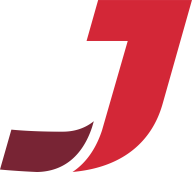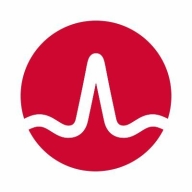


Automic Automation and Rocket Zena are rival products in the automation solutions market. Automic Automation is preferred for its flexibility and scalability benefits, whereas Rocket Zena shines with its cost-effectiveness and integration capabilities, making it an enticing option for budget-aware customers.
Features: Automic Automation provides an extensive feature set, including advanced scheduling and resource management alongside a solid compliance and security focus, tailor-made for complex enterprise settings. It offers flexible automation that adapts to various business demands. Rocket Zena delivers efficient, streamlined automation processes with a strong multi-platform support, making it a solid choice for those prioritizing simplicity and performance across systems. Its integration capabilities are notable, fitting well into existing infrastructures.
Room for Improvement: Automic Automation could benefit from simplification in deployment processes and enhanced ease-of-use of its features to reduce the learning curve for new users. Rocket Zena might improve by expanding its feature set to better compete with advanced scheduling features, offering more robust security options, and enhancing its scalability for larger enterprise requirements.
Ease of Deployment and Customer Service: Automic Automation can be complex to deploy, often taking more time, but it compensates with comprehensive customer support during the setup process. Its model works well for tailor-made implementations. In contrast, Rocket Zena facilitates a faster, simpler deployment experience, supported by responsive customer service, which aligns with firms needing rapid transitions.
Pricing and ROI: Automic Automation necessitates a higher upfront investment yet promises substantial returns through scalability over time. Despite this, Rocket Zena offers a lower initial cost approach, appealing to cost-conscious buyers, and delivers satisfactory performance, presenting an attractive option for organizations with fiscal restraints, despite a potential lower long-term ROI compared to Automic.
| Product | Market Share (%) |
|---|---|
| Automic Automation | 7.3% |
| JAMS | 2.3% |
| Rocket Zena | 2.6% |
| Other | 87.8% |



| Company Size | Count |
|---|---|
| Small Business | 11 |
| Midsize Enterprise | 8 |
| Large Enterprise | 18 |
| Company Size | Count |
|---|---|
| Small Business | 19 |
| Midsize Enterprise | 14 |
| Large Enterprise | 67 |
| Company Size | Count |
|---|---|
| Small Business | 3 |
| Large Enterprise | 6 |
JAMS is an automation and job scheduling solution designed for workflow optimization, catering to businesses large and small with flexible licensing and integration options.
Offering both Core and Advanced packages, JAMS supports a range of environments from small teams to large-scale operations. Its standout features include integration with platforms like PowerShell, SQL, and SAP, coupled with capabilities such as dependency management and natural language scheduling. JAMS simplifies job management, centralizes workflows, and boosts productivity with its robust automation features. Customizable workflows and insightful logging make it adaptable for diverse needs, supported by responsive customer service ensuring seamless operations.
What are JAMS's key features?In industries, JAMS is employed for automating workflows and managing batch jobs. Organizations utilize it for SSIS, SQL Server tasks, file transfers, and integrating with vendor systems, achieving efficient file automation and data management. Scheduler enables precise execution of thousands of tasks daily, enhancing operational efficiency.
Automic Automation offers a web-based GUI for high scalability and flexibility, integrating with platforms like SAP and Oracle. It promotes efficient process automation and supports multiple OS environments, benefiting diverse industries with its robust predictive capabilities.
Automic Automation facilitates process automation and workload management, providing valuable integration with applications like SAP and Oracle. It supports a wide range of operating systems and environments, enabling seamless workflow automation. It features a web-based interface accessible across devices, ensuring scalability and flexibility for complex job automation. Users find its predictive capabilities and platform support instrumental in enhancing operations, although improvements are noted in reporting, cloud integration, and documentation. Licensing and pricing structures also present room for optimization, along with workflow dependency management and smoother upgrade paths.
What are the key features of Automic Automation?
What benefits and ROI should users expect from Automic Automation?
Automic Automation sees implementation in industries like banking, finance, and telecommunications, where it automates ERP systems, schedules batch jobs, integrates workloads, and manages file transfers. By supporting SAP, Oracle, and ETL tasks, it aids efficiency and workload automation across varied environments including cloud and mainframe systems.
Rocket Zena offers scheduling and dependency mapping, intuitive interface, and containerized deployment. It simplifies workflow automation, enhancing efficiency across platforms.
Rocket Zena's strengths lie in its scheduling capabilities, graphical interface, and efficient deployment. It supports users in task management with cross-platform scheduling, streamlining repetitive tasks through automation. The web-based client facilitates process visualization and workflow management, while the notification system enhances task handling. Users can manage mainframe, Linux, and Windows environments while integrating with SAP and Oracle, ensuring comprehensive automation and efficient job execution.
What are the key features of Rocket Zena?In industries like finance and manufacturing, Rocket Zena plays a vital role in scheduling batch jobs and automating file transfers. It helps adapt task scheduling to business calendars and integrate with existing platforms, ensuring a smooth workflow that meets business objectives.
We monitor all Workload Automation reviews to prevent fraudulent reviews and keep review quality high. We do not post reviews by company employees or direct competitors. We validate each review for authenticity via cross-reference with LinkedIn, and personal follow-up with the reviewer when necessary.